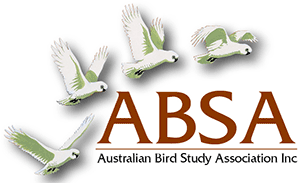Diet of the Satin Bowerbird Ptilonorhynchus violaceus in the Illawarra Region, New South Wales, Australia
| Posted: |
05/06/2016 |
| Author(s): |
David R. Waterhouse, Matthew Mo |
Phenological patterns in fruiting are an important facet of avian frugivore ecology. The annual diet of the Satin Bowerbird
Ptilonorhynchus violaceus has been documented mainly in the northern parts of its distribution. Less diverse assemblages of fruiting plants are expected in the more temperate regions. This paper reports on a five-year dietary study in the Illawarra rainforests, south of Sydney. Ground surveys recorded monthly phenologies for 83 species of fleshy fruit-producing plants and 78 observations of Satin Bowerbirds feeding. Twenty-six species of trees and climbers were identified in the diet. Moreton Bay Fig
Ficus macrophylla, Jackwood
Cryptocarya glaucescens and Crabapple
Schizomeria ovata were the most significant feed species, followed by Wild Quince
Alectryon subcinereus, White Quandong
Elaeocarpus kirtonii, Sandpaper Fig
Ficus coronata and Brown Beech
Pennantia cunninghamii. Species that fruited sporadically comprised approximately one-third of the fruit component of the diet. The number of species fruiting reliably was lower during the breeding season, from September to December, than other months of the year. During this period, there appears to be accentuated reliance on invertebrate prey and herbs. Satin Bowerbirds formed foraging associations with seven other birds, sharing more than half of the fruit species in its diet. This study contributes ecological information necessary for restoring natural corridors in the fragmented Illawarra rainforests to facilitate fauna movement and seed dispersion.
>> Download Abstract |
File Size: 319KB
>> Download Complete PDF | File Size: 299KB
